Tower of London
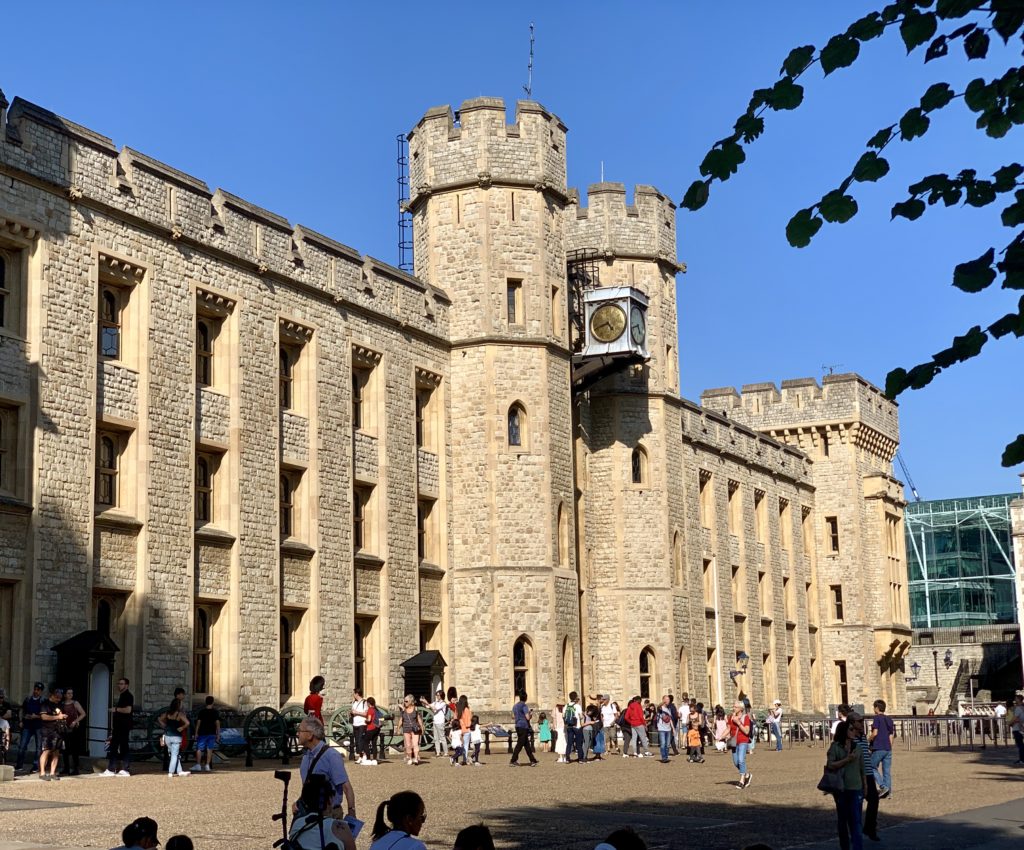
 The message on the tee shirt of the guy from Barcelona, who sat across from me on the train from London Gatwick to Victoria Station, was a quote from 4L83R7 3IN573IN. After he identified the name of the author, Albert Einstein, I was able to decode “The measure of intelligence is the ability to change.” Our journey from tiny Dornoch to bustling London challenged us to change rapidly.
The message on the tee shirt of the guy from Barcelona, who sat across from me on the train from London Gatwick to Victoria Station, was a quote from 4L83R7 3IN573IN. After he identified the name of the author, Albert Einstein, I was able to decode “The measure of intelligence is the ability to change.” Our journey from tiny Dornoch to bustling London challenged us to change rapidly.
- EasyJet airplane to London Gatwick
- shuttle bus from plane to Gatwick South Terminal; shuttle train to North Terminal
- express train to Victoria Station
- Underground rail to Bailey’s Hotel opposite Gloucester Road Station; walk to Kensington

- double decker bus from Kensington to Haymarket
- walk through Trafalgar Square
- Underground rail to Tower of London
- Metro Boat to Embankment
- long walk to Piccadilly Circus for tea at Fortnum and Mason
- London taxi back to the Hotel.
Now that you know how we got around, let me tell you what we saw on our first day. We began with a visit to the Tower of London. We learned that it is actually twenty towers! One, the White Tower Museum, is full of armor and arsenals, with a surprisingly serene chapel.
Traitors’ Gate is a real “Watergate,” the boat entrance to the Tower from the Thames. Rick Steves’ Pocket Guide reports “Princess Elizabeth, who was a prisoner here before she became Queen Elizabeth I, was carried down the Thames and through this gate on a barge, thinking about her mom, Anne Boleyn, who had been decapitated inside the Tower just a few years earlier.”
At the entrance we had met a beaver-hatted guard. On Tower Green, we chatted with famous prisoner Sir Walter Raleigh and his Elizabethan consort. We paused at a modern sculpture commemorating the chopping block where many enemies of the Crown lost their heads. For perspective, Rick Steves reports that in 900 years, only six people were executed inside the walls, but many more were held prisoner. We loved seeing the Tower Bridge from the Tower Green. Once, Violet noticed the drawbridge lifted for boat traffic.

Crown Jewels. Riding on a conveyor belt inside one of the towers, we could view fabulous crowns, jewels, orbs, and scepters. Thanks to the Mission London Scavenger Hunt Adventure book that Uncle Joe had sent Violet, we learned that, in a coronation ceremony
The newly crowned king or queen receives a scepter containing the Great Star of Africa, the world’s largest clear-cut diamond, weighing 530 carats.
Appropriately, a sign in the Gallery announced that the exhibition was underwritten by De Beers Group, the world’s leading diamond company. We took special note of the smallest crown, one that Queen Victoria wore atop her widow’s garments after the death, at 42, of her husband, Prince Albert. No photos were allowed, so I found this one online to help us remember the splendor of the Crown Jewels.
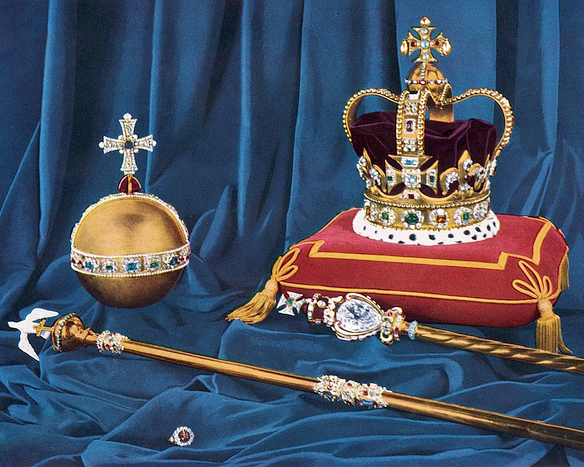
The family version of the Acousti-Guide that each of us used was narrated by ravens, who escorted us to see privileged ravens cultivated by the Tower staff for centuries. Their wing spans reach one-and-a-half meters (ironically, the guide used metric, rather than Imperial measures). The next day we saw more ravens in Kensington Park. Our Acousti-Guides helped us bypass the huge groups following Beefeater guides and also revealed that the slits in the walls were great for Tower soldiers to shoot arrows from and practically impossible for the enemy to shoot arrows in.
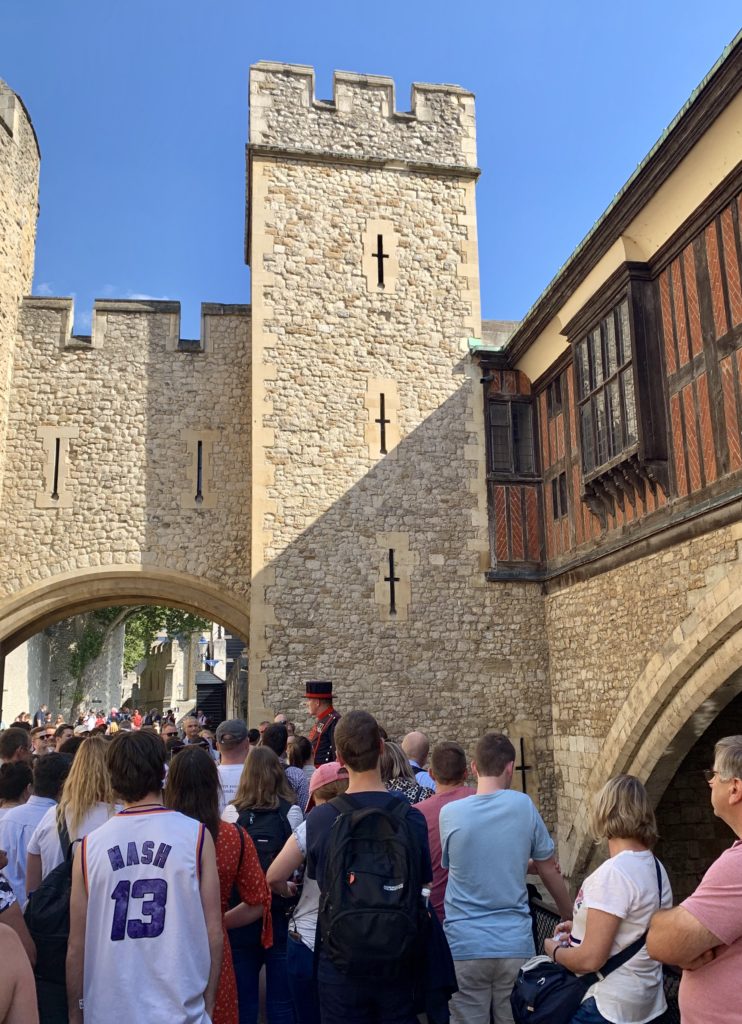
The Tower of London is one of seven UNESCO World Heritage Sites in London. It was a thrill to begin seeing London at the top. Our friend Lisa Craig urged us to have tea at Fortnum and Mason, so we decided that would be a perfect place for our first evening meal. Sure enough, the savouries were delicious and the lyrically painted walls supplied a guide to royal succession from Queen Anne, 1702-14, to Queen Elizabeth II, 1953 to the present.

Back at the lovely Bailey Hotel in South Kensington, seventeen hours and 14,611 steps later, we were ready to rest for four more days in this fascinating city.
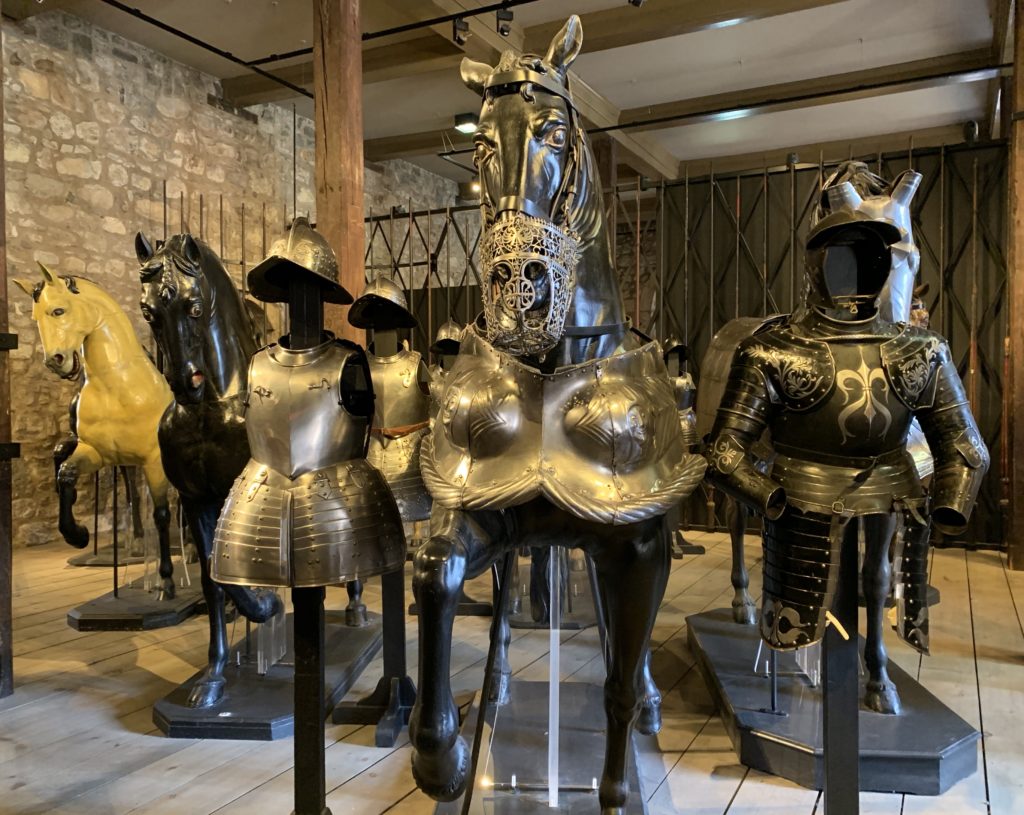


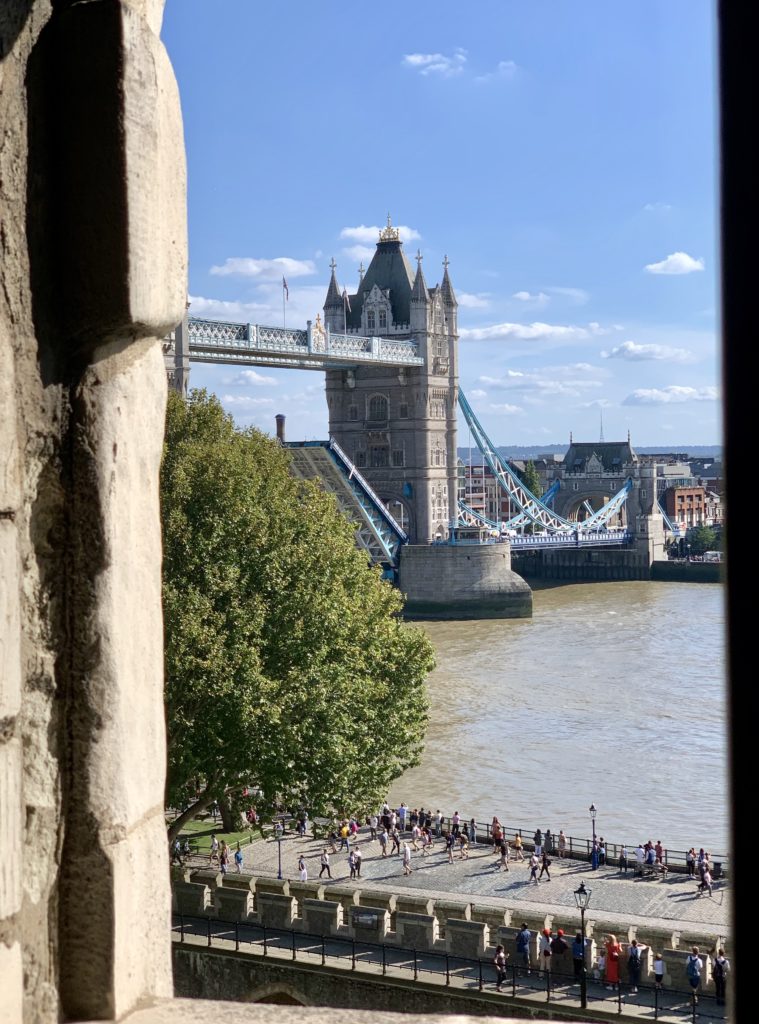
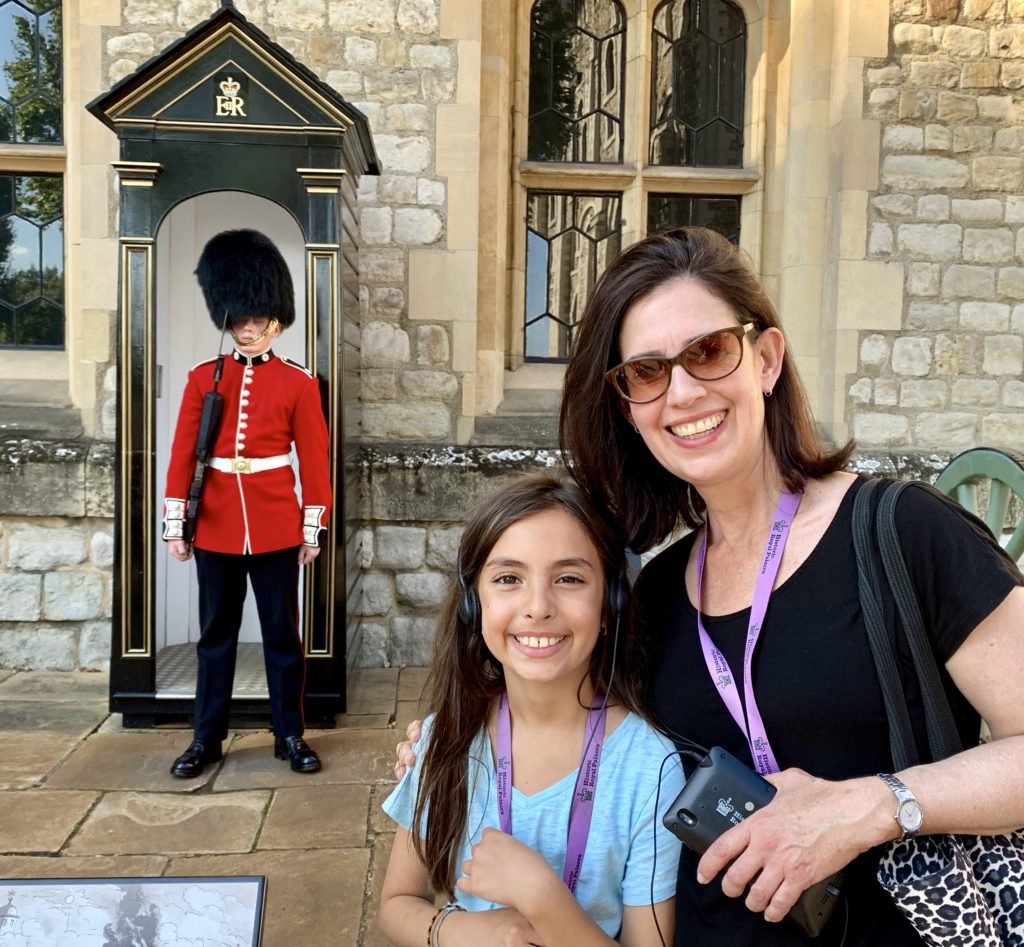
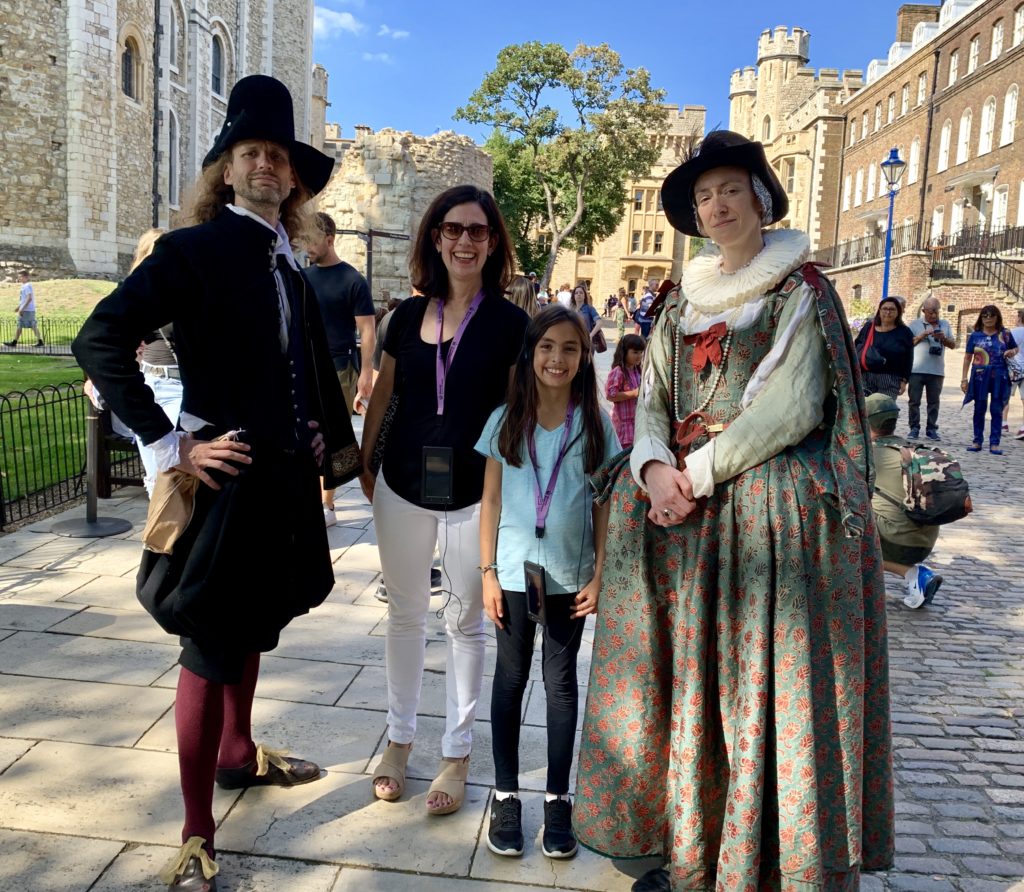
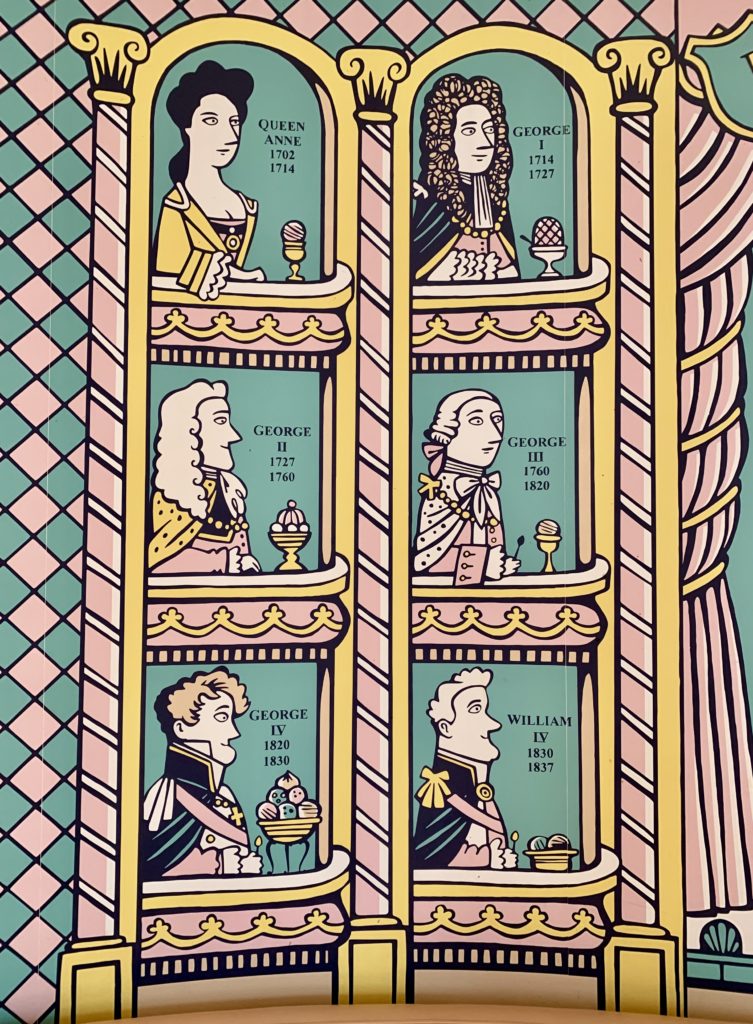
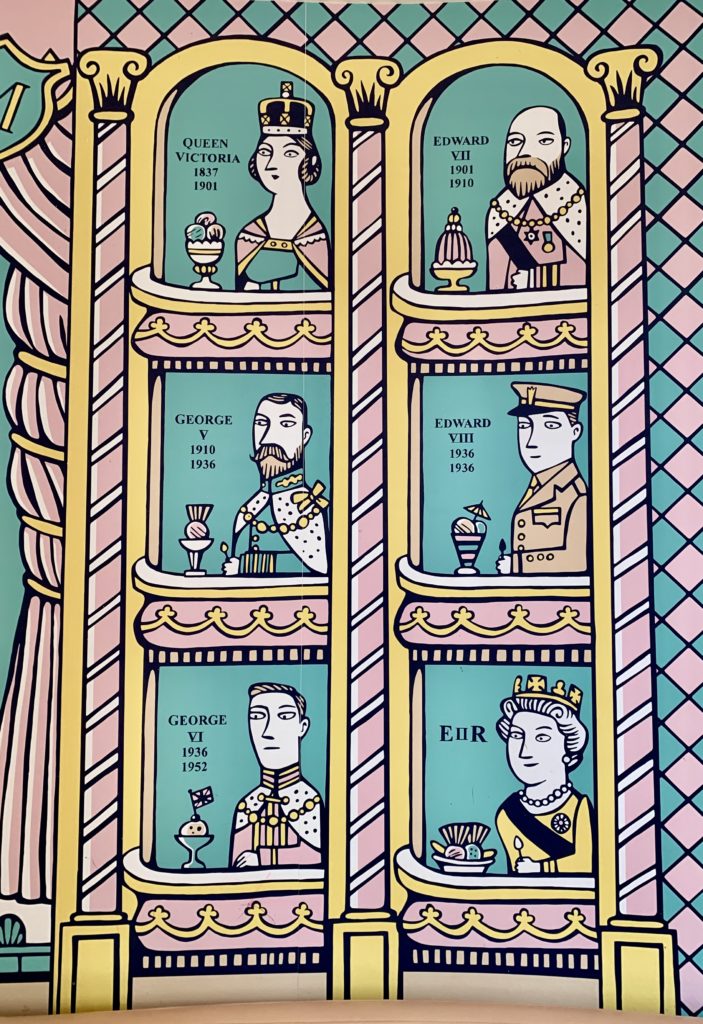
Leave a Reply